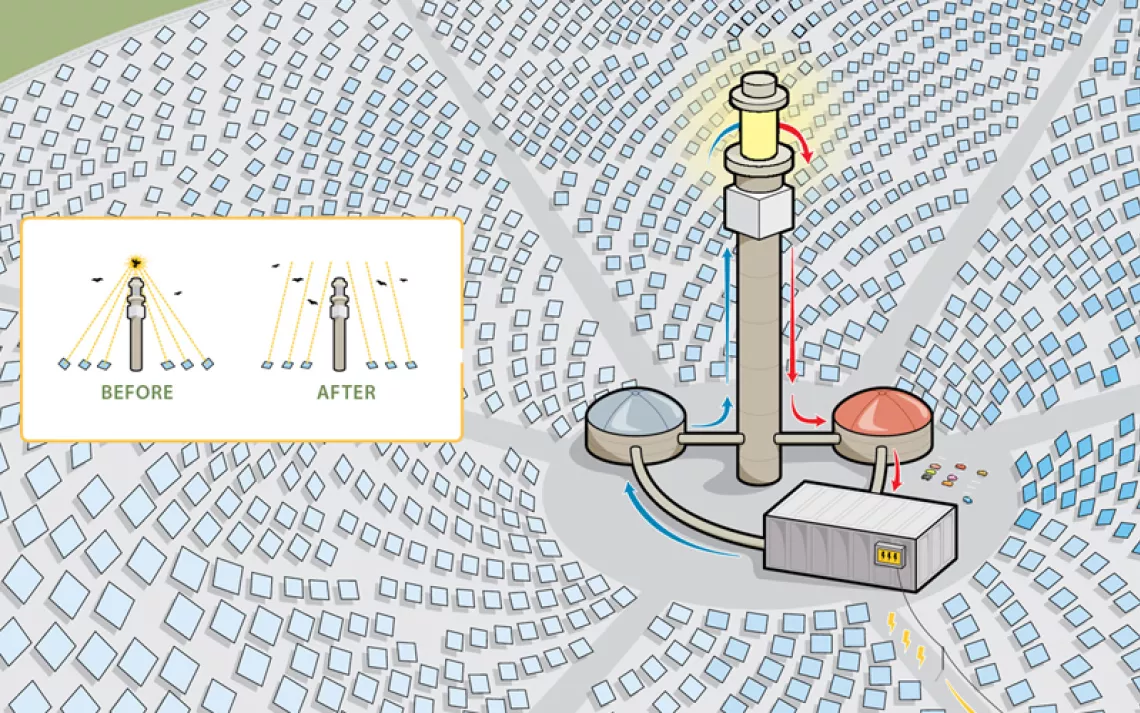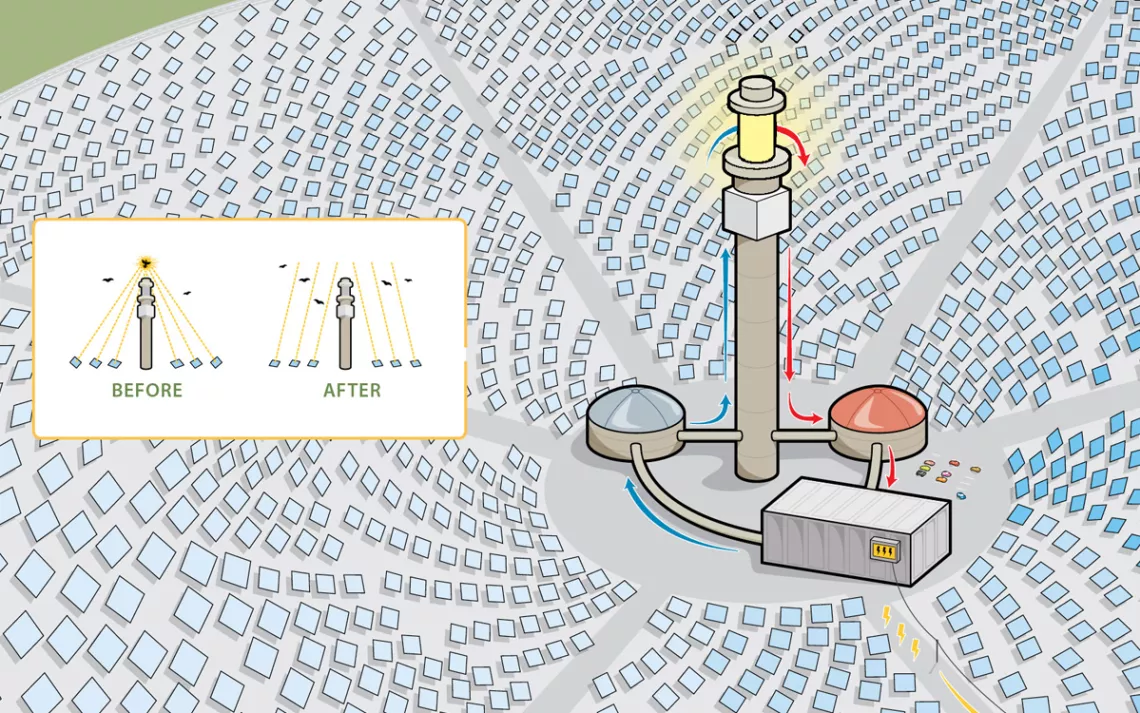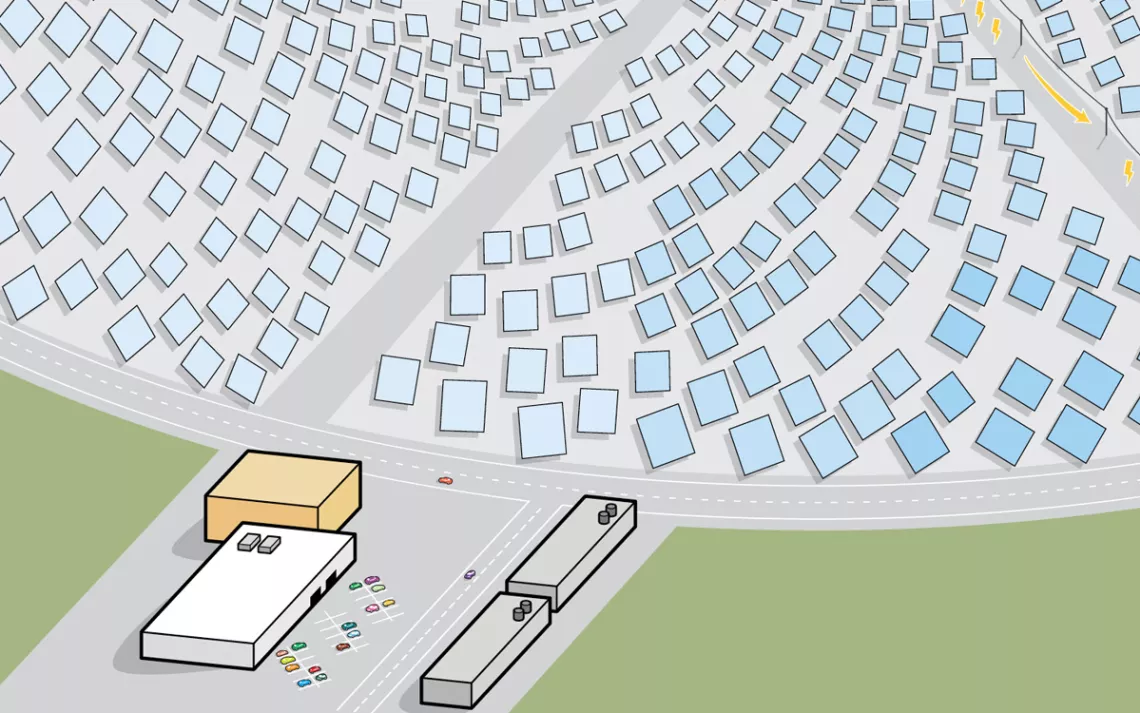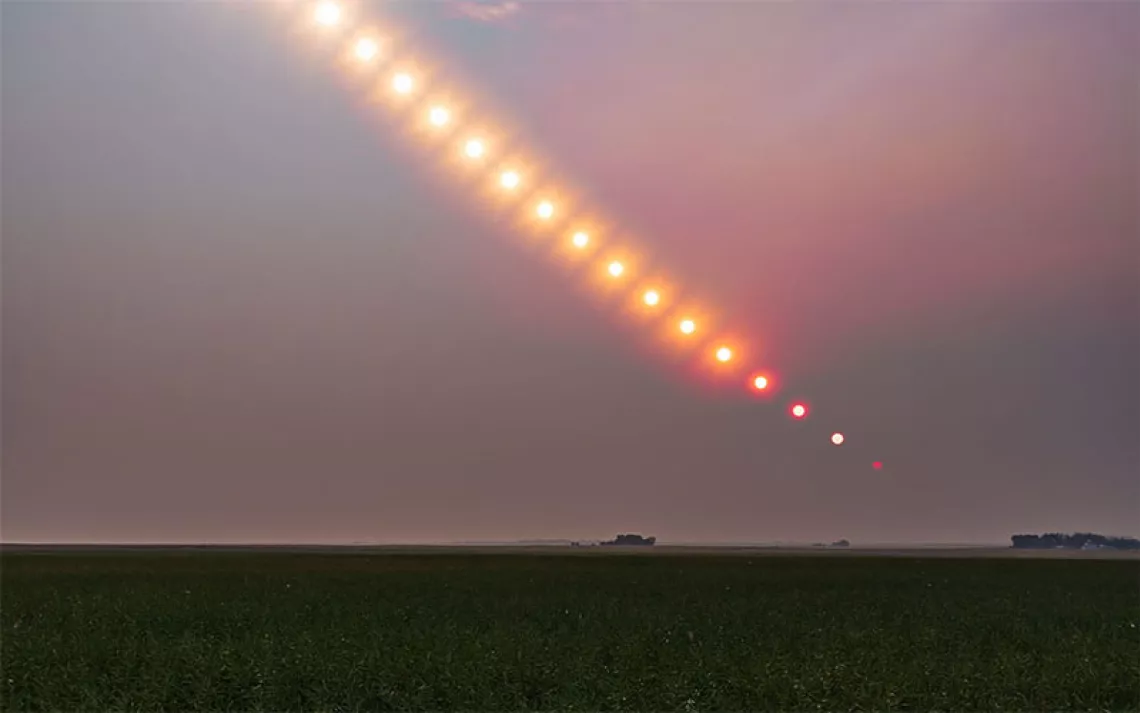Sin City Lights Up With a Dash of Molten Salt
Nevada is the home of the world's first utility-scale molten salt facility
The bright lights of Las Vegas flip on when the sun sets, making solar an unlikely energy source for the city. But a solar thermal power station 225 miles away stores the sun’s heat in molten salt, with the capacity to light 75,000 homes far into the night. Nevada’s Crescent Dunes station is the world’s first and only utility-scale molten salt facility. Wildlife advocates initially raised concerns about bird deaths in the power station’s airspace, but operators have taken steps to reduce avian mortality.

The LIQUID SALT starts in a cold tank and is piped up a 640-foot-tall tower to the receiver, an arrangement of thin-walled metal tubes. Mirrors reflect solar heat onto these tubes, heating the salt inside them to 1,050°F.
Unlike water, which turns to steam at 212°F and becomes more difficult to store, the salt stays liquid at this high temperature.

After being heated, the salt is piped back down to an INSULATED HOT TANK for storage. The salt loses only 1 percent of thermal energy per day, an efficiency that helps make this form of energy storage 10 times cheaper than battery technologies.
More than 10,000 MIRRORS, each the size of a billboard, surround the tower. The mirrors swivel to track the sun and reflect its rays onto the receiver. Originally, the mirrors focused on a small patch of air when in standby mode, occasionally incinerating passing birds. Engineers addressed this problem by spreading out the beams across a wider swath of sky. An environmental consulting group estimates that 465 birds die each year across the entire site, which it says is fewer than at wind and fossil fuel plants of the same size. None of the birds belong to a threatened or endangered species.

When electricity is needed, the molten salt is pumped to a HEAT EXCHANGER, which powers a steam turbine. The salt eventually goes back to the cold tank. Crescent Dunes can generate 500,000 megawatt-hours of electricity each year, about twice the amount produced by a photovoltaic solar plant of equal size.
This article appeared in the September/October 2018 edition with the headline "Salted Away."
 The Magazine of The Sierra Club
The Magazine of The Sierra Club



